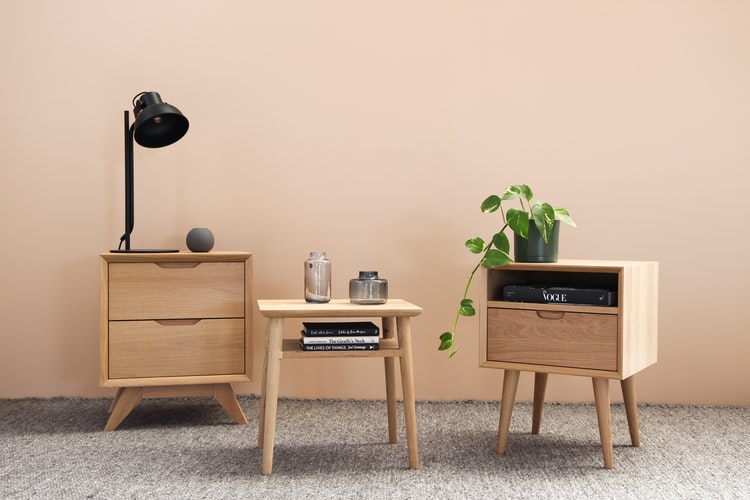How to Start and Succeed in the Furniture Manufacturing Business

Strong 8k brings an ultra-HD IPTV experience to your living room and your pocket.
In today’s world, where personalization and design aesthetics are increasingly important, the furniture manufacturing business stands out as a highly rewarding industry. Whether it’s homes, offices, cafes, or hotels, furniture plays a pivotal role in shaping the atmosphere and functionality of a space. And with the rise of interior design awareness, the demand for custom-made and high-quality furniture is only growing.
Starting a furniture manufacturing business is no small feat, but it can become a fulfilling and profitable venture with the right planning, skillset, and market understanding. This article will guide you through the essentials of starting and growing a successful furniture manufacturing business — from planning and production to marketing and expansion.
Understanding the Furniture Manufacturing Industry
The furniture industry has evolved from traditional carpentry to a blend of artistry, engineering, and mass production. Today’s consumers are not just buying tables or chairs — they are investing in lifestyle, comfort, and design. Whether you're targeting residential clients, commercial buyers, or interior designers, it’s crucial to understand that furniture manufacturing is more than crafting wood; it’s about delivering solutions that meet specific needs.
From modular office systems to handcrafted luxury pieces, the industry caters to a diverse clientele. You can choose your niche based on your passion, available resources, or market demand — for example:
Custom residential furniture
Office and commercial furniture
Eco-friendly and sustainable furniture
Luxury and high-end collections
Minimalist and Scandinavian-style furnishings
Steps to Start a Furniture Manufacturing Business
1. Conduct Market Research
Before you start, understand what your potential customers are looking for. Is there a gap in the local market for modern bedroom sets? Are businesses seeking affordable office solutions? Research your competition, study customer preferences, and determine what kind of furniture you want to specialize in.
2. Create a Business Plan
A solid business plan acts as a roadmap for your operations. It should outline your mission, vision, target market, product line, pricing strategy, marketing approach, and financial projections. Investors and banks will also require a business plan if you’re seeking funding.
3. Choose the Right Location
Your location should be convenient for logistics and accessible to your target market. If you’re manufacturing on a larger scale, you'll need space for raw material storage, machinery, and finished goods. If you’re starting small, even a home-based workshop can work as long as it meets regulatory requirements.
4. Legal Formalities
Register your business name, obtain a business license, and comply with local manufacturing regulations. Depending on your region, you may need environmental clearances, especially if you're using chemical-based finishes or importing wood.
5. Set Up Your Workshop
Invest in quality machinery and tools — from table saws and jointers to CNC routers and finishing spray booths. The equipment you choose depends on the scale of your operations and the type of furniture you plan to build.
You’ll also need skilled carpenters, polishers, upholsterers, and finishers. Hiring experienced professionals can ensure your output meets high standards.
6. Source Materials
Quality materials make quality furniture. Build relationships with trusted suppliers of wood, veneers, laminates, screws, glue, fabric, foam, and hardware. Sustainable and reclaimed wood is gaining popularity, especially among eco-conscious customers.
7. Design & Prototyping
Invest in design software like AutoCAD, SketchUp, or SolidWorks to create prototypes and 3D models. Working with a talented designer can help you create pieces that are both functional and visually appealing. Prototype testing is essential before full-scale production begins.
Manufacturing Process in Furniture Business
Here’s a simplified overview of a standard furniture production workflow:
Design and Drawing: Product designs are created, often using CAD software, to visualize and plan dimensions.
Material Cutting: Using saws and cutting machines, raw materials are shaped into necessary components.
Joinery and Assembly: Parts are assembled using traditional methods or modern hardware.
Surface Finishing: Sanding, polishing, painting, or laminating adds a professional finish.
Quality Control: Final inspection ensures stability, alignment, aesthetics, and durability.
Packaging: Products are packed for safe transportation, often with protective wraps or boxes.
Automation and technology play a significant role in speeding up production and reducing human error in large-scale units. However, handcrafted furniture still holds high value in the luxury market.
Marketing Strategies for Your Furniture Business
1. Build an Online Presence
In today’s digital world, your business needs an engaging and functional website showcasing your products, client reviews, and contact info. High-quality photographs, videos, and a smooth user interface help convert visitors into buyers.
2. Leverage Social Media
Platforms like Instagram and Pinterest are ideal for visual products like furniture. Regularly post your latest designs, behind-the-scenes shots, and customer testimonials. Engaging content can attract interior designers and homeowners alike.
3. Offer Customization
Modern buyers love to personalize their space. Offering made-to-order services, color choices, and material options can significantly increase your appeal.
4. Participate in Exhibitions
Trade shows and furniture expos are great for building brand awareness and networking with suppliers and buyers.
5. Collaborate with Interior Designers and Builders
Form partnerships with architects, interior decorators, and construction companies. They often need reliable furniture providers for their projects and can bring repeat business.
Challenges in the Furniture Manufacturing Industry
Like any business, furniture manufacturing comes with its own set of hurdles:
High material costs: Timber, foam, and hardware prices fluctuate regularly.
Skilled labor shortage: Finding experienced artisans can be tough.
Space constraints: Manufacturing requires significant space for machines and storage.
Changing design trends: What’s popular today may be outdated tomorrow.
Logistics and delivery: Furniture is bulky and fragile, making transport expensive and risky.
Anticipating these challenges and planning ahead — like maintaining buffer stock or investing in training — can minimize disruptions.
Sustainable and Eco-Friendly Practices
Today’s conscious consumer often prefers brands that care for the environment. Integrating sustainability into your operations can set you apart:
Use reclaimed or FSC-certified wood
Avoid VOC-heavy paints and adhesives
Implement waste recycling in your workshop
Offer eco-friendly product lines
Not only does this help the planet, but it also opens up opportunities in markets where sustainability is non-negotiable.
Scaling Your Furniture Manufacturing Business
Once your business stabilizes, consider expanding:
Open your own showroom to interact directly with customers.
Launch an eCommerce store to reach buyers across the country.
Export furniture to international markets, especially if you’re producing unique designs.
Franchise your brand if you develop a recognizable name and process.
Innovation is key — introducing smart furniture with built-in charging ports, foldable designs for urban homes, or ergonomic pieces for work-from-home setups can keep your brand fresh and relevant.
Final Thoughts
The furniture manufacturing business is a blend of craftsmanship, creativity, and commerce. Whether you're starting with a few custom pieces or planning a large-scale operation, your success lies in understanding market demands, maintaining product quality, and building a brand people trust.
One such brand that has carved its niche in this competitive space is Farooqi Interior — known for its refined designs, commitment to quality, and a deep understanding of client needs. If you're looking to learn from the best or explore exceptional craftsmanship, Farooqi Interior stands as a true example of excellence in the furniture manufacturing industry.
Frequently Asked Questions (FAQs)
Q1: Is furniture manufacturing a profitable business?
A: Yes, furniture manufacturing can be highly profitable if managed efficiently. Profit margins depend on factors like material cost, production efficiency, and branding.
Q2: How much investment is needed to start a small furniture manufacturing unit?
A: A small-scale unit may require an investment of PKR 10–30 lakhs ($3,000–$10,000), depending on equipment, labor, and location. Custom furniture can often be started with even lower investment from a home-based workshop.
Q3: Do I need a degree in design or carpentry to start this business?
A: Not necessarily. While having design knowledge helps, you can partner with designers and hire skilled carpenters. What matters most is your understanding of the market and your business management ability.
Q4: What are the most in-demand types of furniture?
A: Modular kitchen units, ergonomic office furniture, compact urban furniture, and luxury wooden beds are among the top sellers in many markets.
Q5: How can I market my furniture brand effectively?
A: Combine digital marketing (SEO, social media, and paid ads) with offline strategies like exhibitions, interior designer collaborations, and printed catalogs. Offering warranties, free delivery, or customization also attracts more buyers.
Note: IndiBlogHub features both user-submitted and editorial content. We do not verify third-party contributions. Read our Disclaimer and Privacy Policyfor details.


